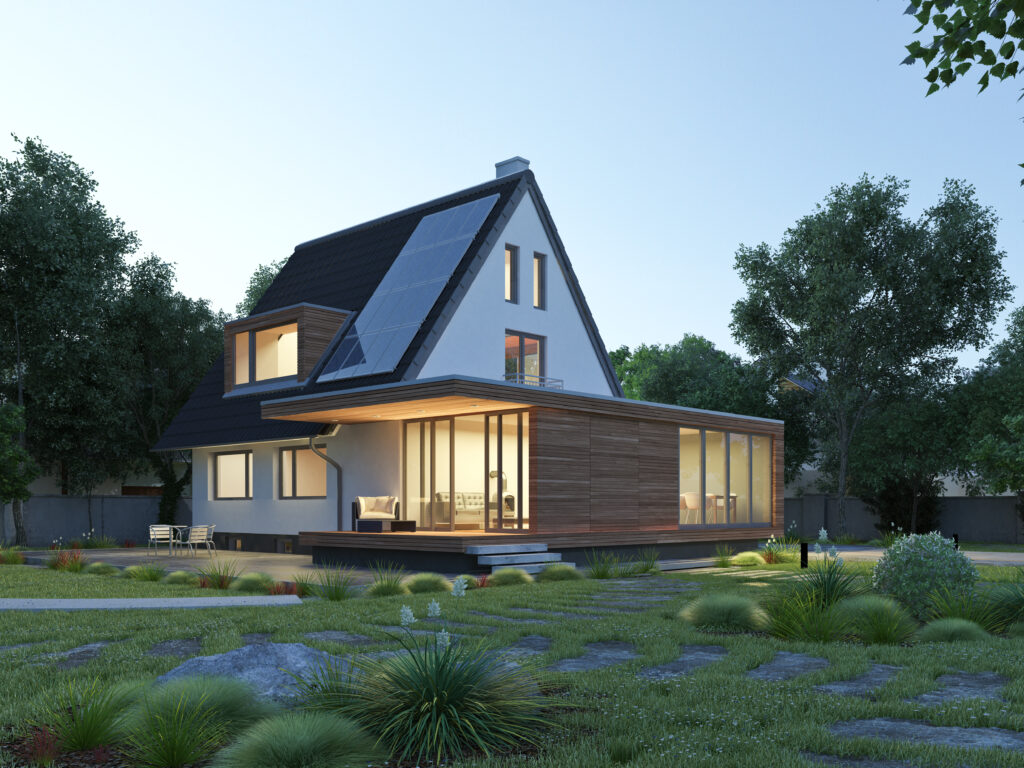Story by Alysha Carusi
A new wave of scientific advancement is hitting one of the highest carbon and waste producing industry in the world: home construction.
The “passive” in Passive House refers to optimized building strategies that reduce the home’s energy needs for heating and cooling year round. But what makes it passive?
It’s all about design! A healthy human body temperature is approximately 37 degrees and a comfortable living space maintains approximately 20-23 degrees year round. Therefore, passive home construction focuses on insulation so that during the coldest winter months, the temperature remains consistent by feeding off collective body heat kept in the home, as well as other non-electric heat sources like fire and sunlight.
During the summer months, ventilation is key. Because the home is so well-insulated and equipped with double or triple-glazed windows, heat from outside does not easily seep into the home, and air flow is optimized to offer a breeze throughout the home, even if it isn’t a cool breeze.
Passive homes also stay hot or cool naturally through meticulous planning and zoning. They are built with seasonal exposure to the sun in mind, meaning they face ample sun to warm themselves during winter exposure and also have built in shades to cool themselves during summer sun exposure.
A passive home approach fuses design, zoning, construction and air flow to create a home that doesn’t require any energy use for 80-90% of the year!
Adequate ventilation
See more →
According to the International Passive House Association, guidelines surrounding passive houses include ventilation units with heat recovery. These units save energy by ensuring that warm exhaust air is not wasted, but first transferred into the incoming fresh air without the two air streams ever physically mixing.
Solar orientation
See more →
Solar orientation is integral for maximizing sun exposure in the winter. For a passive house located in the northern hemisphere, its windows would face south to obtain maximum solar heat. In the summer, passive houses rely on shading and overhangs to keep the building cool.
Both of these systems reduce the need for artificial heating and mechanical cooling, respectively. By building way, a house can reduce its heating and cooling costs by 85%.
Air tight enclosure
See more →
Having an air tight enclosure minimizes air leakage, ensures favourable ventilation, and prevents moisture damage. According to the International Passive House Association, airtightness in a passive house must be demonstrated with a pressure test.
Thermal insulation
See more →
Thermal insulation is a crucial component of any passive house. Proper insulation prevents heat loss during winter and heat gain during warmer months.
A majority of heat loss in a typical home comes from the attic and roof (30%), walls (25%), windows (15%), and ground (10%).
High performance windows
See more →
Double- or triple-glazed windows help to minimize heat transfer in a passive house. These windows help in achieving and maintaining both comfortable indoor temperatures and natural lighting.
What’s the difference between an off-grid home and a passive home?
Simply put, passive homes have access to the grid, but are designed in a way that they don’t often need it.
In fact, passive homeowner Casey in Summerland, BC says, “The home is often overly warm in the winter because of the airtightness.” As a result, they didn’t have to use any electricity those months, even in temperatures as low as -20 degrees!
Off-grid homes do not have access to the traditional grid power and only have access to electricity if they create it for themselves. But, they do have a lot in common. Both passive and off-grid homes have an emphasis (often passion) for renewable energy sources like solar panels, rain barrels Rain barrelsContainers that collect and store rainwater runoff from rooftops that would otherwise be lost to runoff and diverted to storm drains and streams. Environmental benefits include water conservation, storm water management, and reduced water pollution. They're a useful resource for to use when gardening! and other technologies like generators to collect free energy from the sun or wind and store it until needed.
Curious for more science behind the energy of climate change?
Explore solutions for regenerating our planet on Change Reaction.

